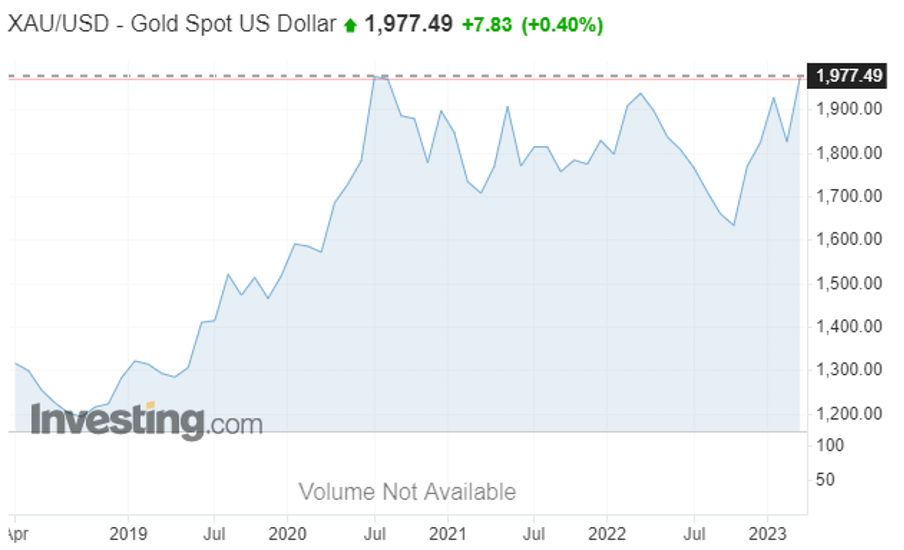Market volatility
The price of gold is determined by the forces of supply and demand. We can see from history that investors often use gold as a safe-haven asset during periods of uncertainty or as a hedge against inflation. As a result of market concerns, the demand for gold is increasing. According to the World Gold Council, demand has risen to an 11-year high in the past year. This was mainly supported by central bank purchases, which bought 1 136 tonnes of gold last year. The gold price is receiving a lot of attention due to market volatility, which has been greatly exacerbated by the problems in the banks that started with the collapse of the JGBs, and subsequently this trend has gained momentum in Europe as well.
Indeed, the well-known Swiss bank Credit Suisse has also announced problems. Some opinions are that panic is unnecessary and that everything will return to normal. However, this is not clear-cut, as there are speculations that more banks could go bust next year. So at the end of the day, investors are looking for a reliable way to prevent more significant losses in their portfolios.
Gold's strong performance
It is the coming period that could favour this commodity. Currently, we see gold trading at $1,940 per ounce. On Monday, we could see that it got as high as $2,000, which was the highest since March 2022. If we count the percentage increase since the problems with the banks began, gold has gained around 10%.* The price support is mainly due to the interest from central banks and this may increase further. The forecast for the coming months is clear, gold's strong performance should continue and the value could surpass new highs. [1]

Performance of XAU/USD – Gold Spot US Dollar during last 5 years. (Source: Investing)
In the past, we have seen the price of gold rise during periods of high inflation as investors have tended to buy less fiat currency and more gold. For this reason, central bank monetary policy in controlling inflation is key to the rise of the yellow metal.
Relative to the dollar, gold as a tradable commodity is denominated in US dollars, creating a type of inverse relationship. This means that when the US dollar rises against other currencies, gold becomes more expensive, which hurts demand. Conversely, when we see the dollar fall, the price of gold rises as the metal becomes cheaper for foreign buyers. All of the above factors will affect the yellow metal in the coming months, so it is imperative for investors to keep an eye on the gradual evolution of the situation surrounding the banks and rising inflation.
Olívia Lacenová, analyst of Wonderinterest Trading Ltd.
*Minute performance is no guarantee of future results
[1] Forward-looking statements are based on assumptions and current expectations, which may be inaccurate, or on the current economic environment, which may change. Such statements are not guarantees of future performance. They involve risks and other uncertainties that are difficult to predict. Results may differ materially from those expressed or implied by any forward-looking statements.